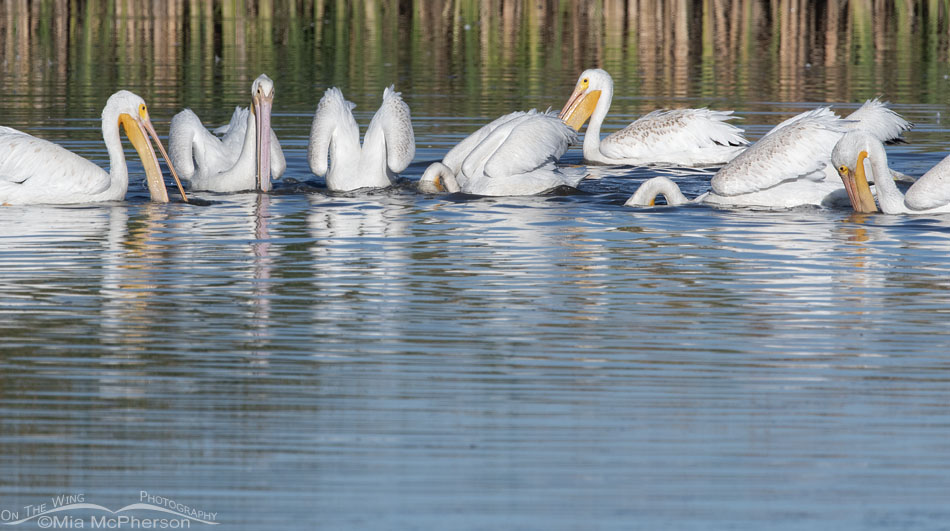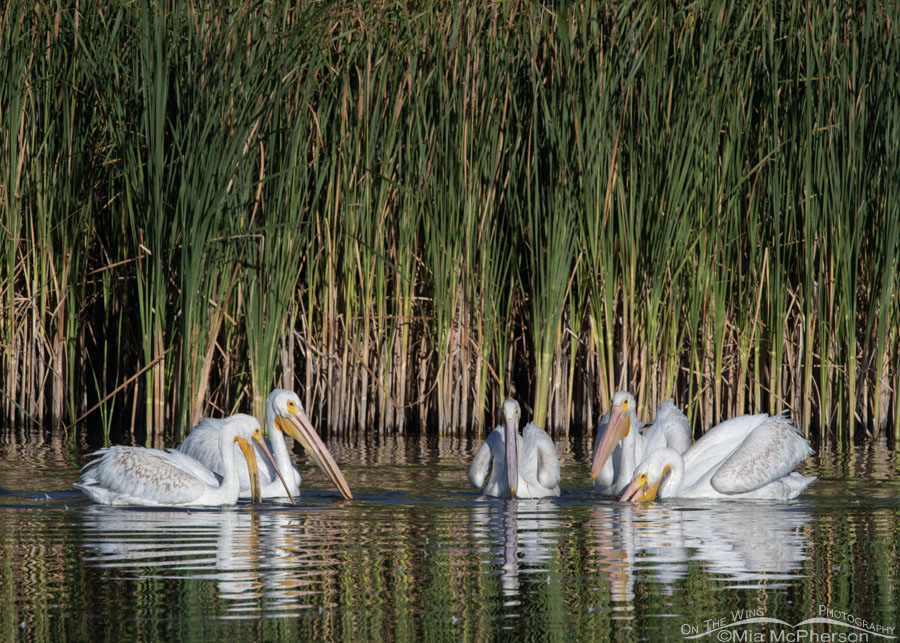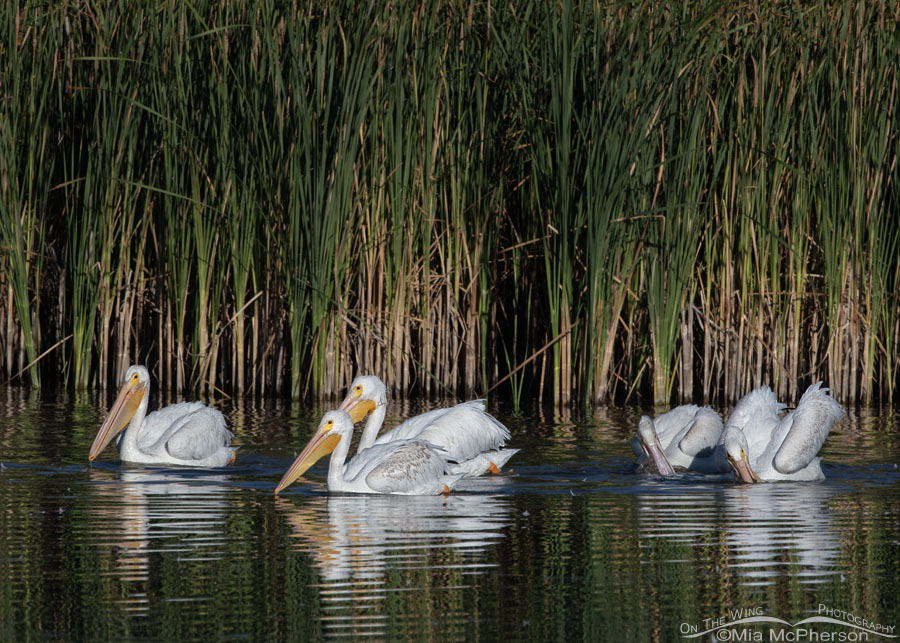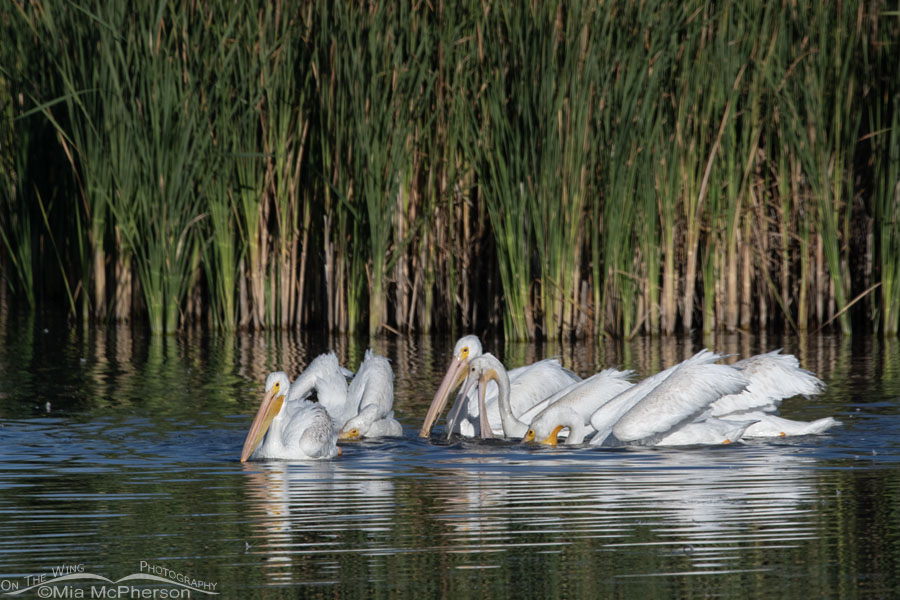Last week, I was happy to photograph a small flock of American White Pelicans fueling up for their fall migration in the wetlands of Farmington Bay WMA.
 Autumn American White Pelicans at Farmington Bay – Nikon D500, f8, 1/2500, ISO 500, Nikkor 500mm VR with 1.4x TC, natural light
Autumn American White Pelicans at Farmington Bay – Nikon D500, f8, 1/2500, ISO 500, Nikkor 500mm VR with 1.4x TC, natural light
The pelicans were cooperative feeding. Cooperative feeding is a behavior observed in American white pelicans where groups of pelicans work together to herd small schooling fish into a dense ball or toward shallow water, making it difficult for the fish to escape.
Some researchers have observed that smaller groups of pelicans, typically ranging from two to six individuals, are the most successful at catching prey using this cooperative herding behavior¹.
 American White Pelicans fueling up for migration – Nikon D500, f10, 1/2000, ISO 500, -0.7 EV, Nikkor 500mm VR with 1.4x TC, natural light
American White Pelicans fueling up for migration – Nikon D500, f10, 1/2000, ISO 500, -0.7 EV, Nikkor 500mm VR with 1.4x TC, natural light
When American White Pelicans are feeding in this manner, I am mesmerized. In my mind it is something like a slow, graceful ballet of foraging pelicans. Of course, I stop to take photos, and I certainly enjoy my time with them.
 Fall American White Pelicans in Farmington Bay’s wetlands – Nikon D500, f10, 1/2500, ISO 500, -0.7 EV, Nikkor 500mm VR with 1.4x TC, natural light
Fall American White Pelicans in Farmington Bay’s wetlands – Nikon D500, f10, 1/2500, ISO 500, -0.7 EV, Nikkor 500mm VR with 1.4x TC, natural light
Watching the pelicans through my lens at the wetlands of Farmington Bay WMA was a fascinating experience.
Note: Brown Pelicans do not use the cooperative feeding method. Instead, Brown pelicans engage in plunge diving, which is also interesting to observe.
 Feeding American White Pelicans in fall – Nikon D500, f10, 1/2000, ISO 500, -0.7 EV, Nikkor 500mm VR with 1.4x TC, natural light
Feeding American White Pelicans in fall – Nikon D500, f10, 1/2000, ISO 500, -0.7 EV, Nikkor 500mm VR with 1.4x TC, natural light
Although I see American White Pelicans in the marshes surrounding the Great Salt Lake as late as December and as early as January, most of them migrate to warmer wintering grounds. Many of those that remain in northern Utah are preparing for their fall migration. I always miss these magnificent white pelicans when they’re away.
Life is good.
Mia
Click here to see more of my American White Pelican photos plus facts and information about this species.


Great series of shots. The reflection of the pelicans is fascinating. Thanks Mia.
I’ve mostly seen pelicans S solitary when looking for food. This gives a wider perspective of these birds I love so much!
What an absolute privilege to see. Thank you.